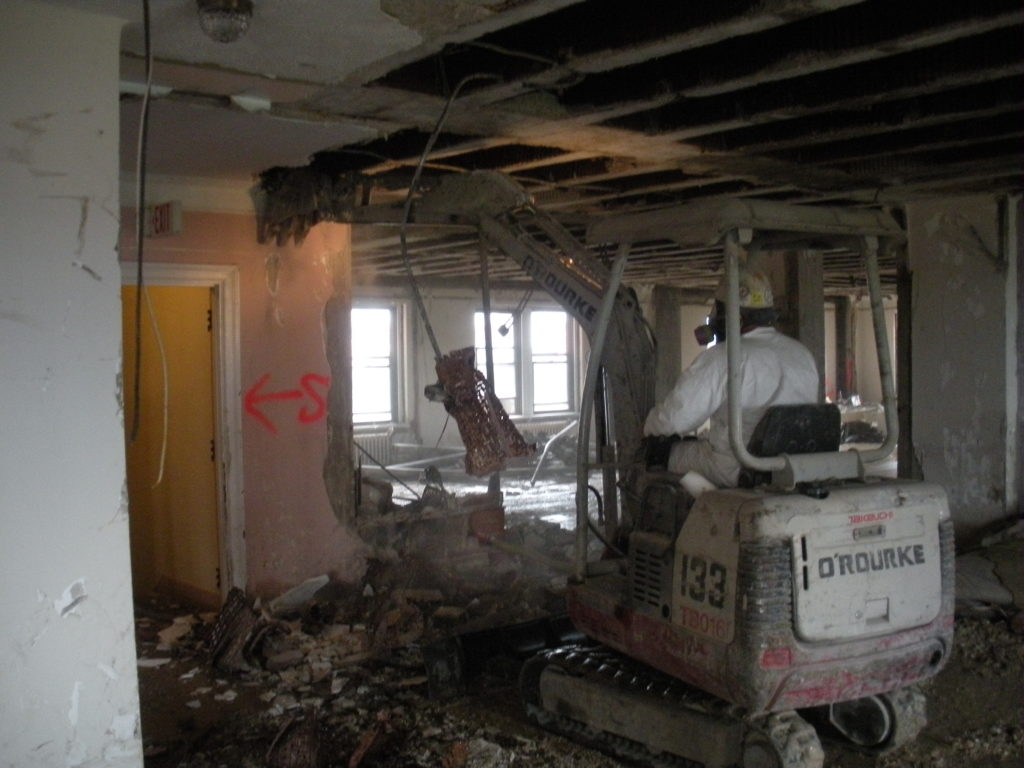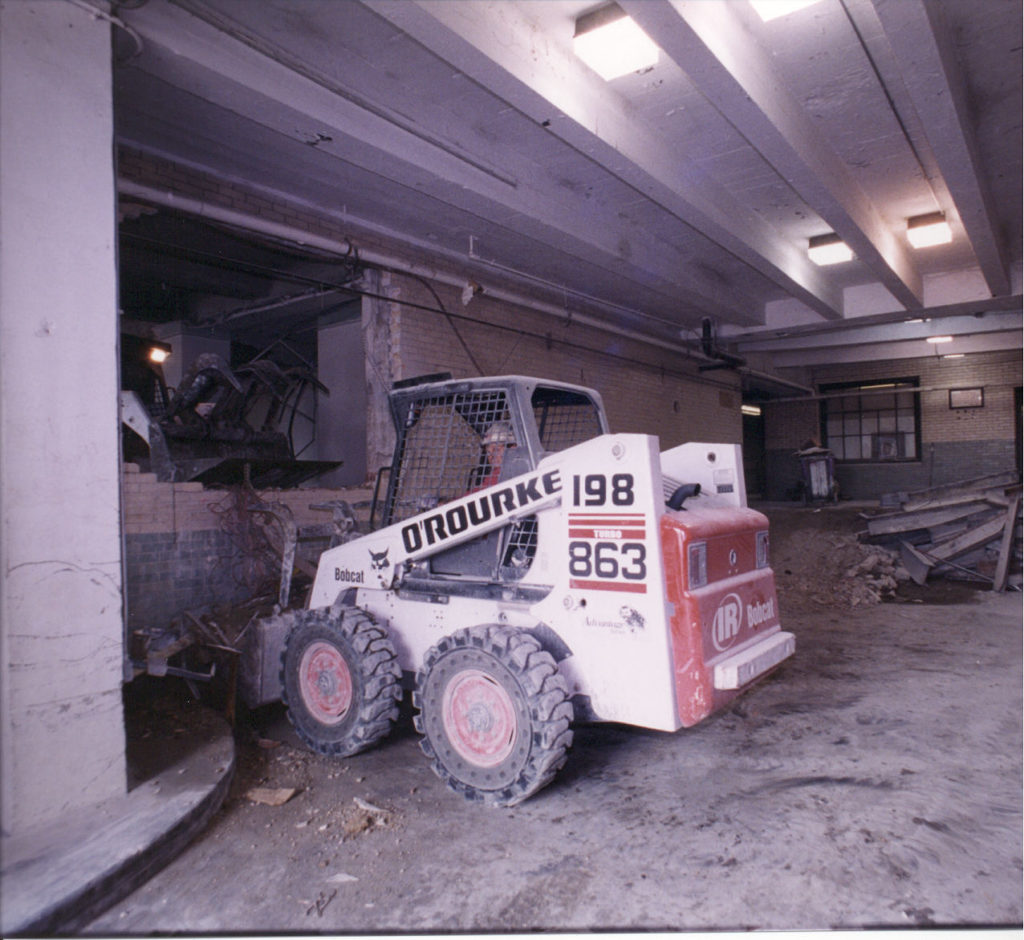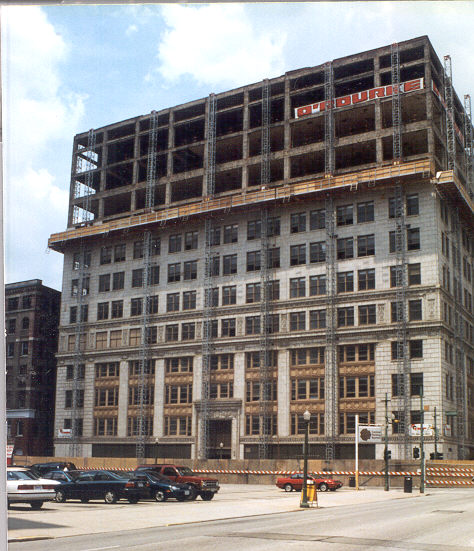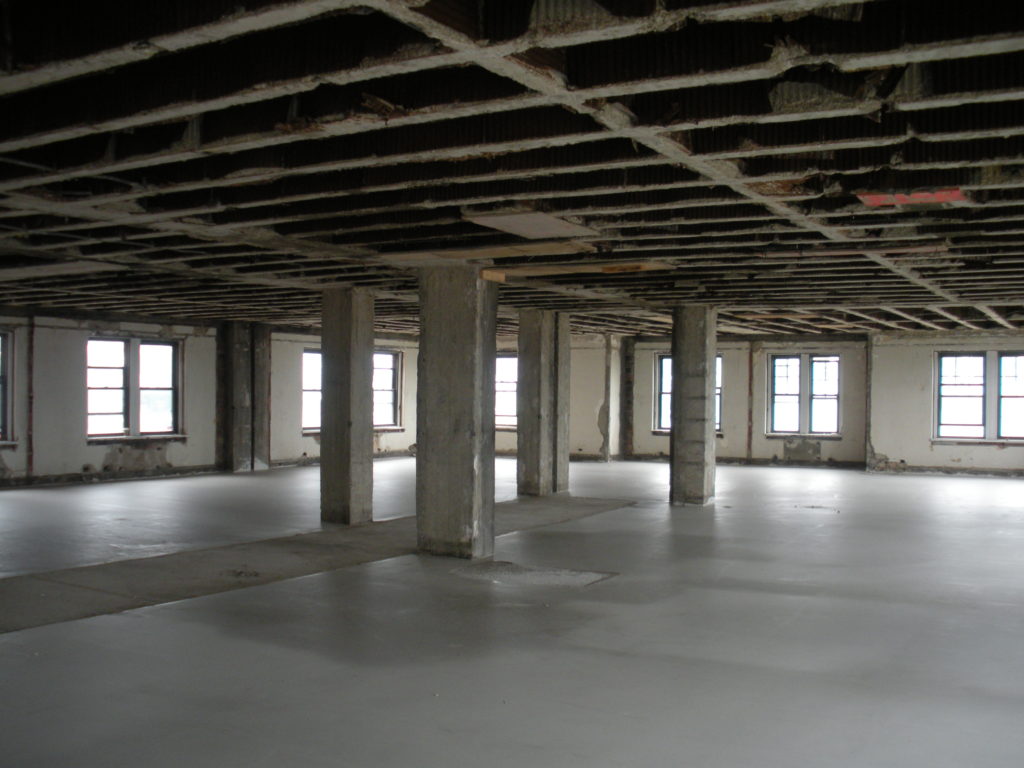For over 60 years, O’ROURKE has been an industry leader in interior demolition. Our highly trained and skilled demolition experts have a track record of completing complex projects in active facilities with minimal disruptions to our client’s daily business operations. We have the expertise and experience to handle any commercial or industrial project, no matter how complex. Whether it’s the interior demolition of an entire building or just a portion, we will get the job done right.
What Is Interior Demolition & When Is It Used?
Interior demolition refers to the process of selectively removing parts of a building’s interior while leaving the structural elements intact. It involves dismantling non-load-bearing walls, ceilings, floors, fixtures, plumbing, electrical systems, and other components without compromising the building’s overall framework. This service is often a precursor to renovation, remodeling, or repurposing projects.
Specialized equipment and techniques ensure minimal damage to remaining structures, making interior demolition a precise and efficient way to prepare spaces for new designs or functionality.
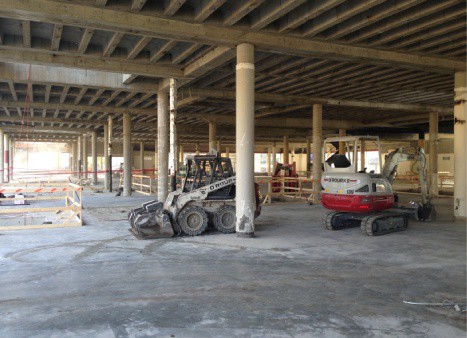 Complete removal of all interior walls, partitions, and ceilings
Complete removal of all interior walls, partitions, and ceilings- Flooring removal (including carpet, vinyl flooring, tile flooring, concrete, and hardwood floors)
- Demolition of all fixtures, cabinets, and countertops
- Removal of all wiring, electrical, mechanical, and plumbing systems
- Removal and disposal of hazardous materials
- Preparation for new construction within the existing structure
- Deconstruction for salvage, asset recovery, and disposal of debris
When Is Interior Demolition Necessary For Your Property?
Interior demolition is an important part of the construction process. It helps to create a clean work site and ensures that all materials are properly removed from the premises.
In addition, selective demolition helps to prepare a space for new construction. By removing old fixtures, flooring, and debris, contractors can create a blank canvas ready for new building projects. Knocking down walls and partitions, allows for new layouts and open floor plans to be created, providing more flexibility and efficiency in the use of the space. By gutting an old space, contractors can update the electrical, plumbing, and HVAC systems to meet the needs of new occupants.
Overall, interior demolition is necessary for enhancing buildings, adapting spaces to changing needs, improving safety, and facilitating modernization. When carried out responsibly and with proper planning, interior demolition can lead to significant positive changes and benefits for the property and its occupants.
Our Expert Interior Demolition Process
At O’ROURKE, every interior demolition project is approached with precision, safety, and efficiency. Whether you're preparing a commercial building for renovation or clearing out space for a new layout, our team follows a structured process to minimize disruption and maximize results.
1. Initial Site Assessment & Planning
We begin with a thorough evaluation of the property. Our experts assess structural elements, utilities, hazardous materials (like asbestos or lead paint), and access points. From there, we develop a demolition plan that ensures safety, compliance with local regulations, and coordination with the renovation schedule.
2. Permits & Regulatory Compliance
Before work begins, our team secures the necessary permits and ensures full compliance with local building codes, safety standards, and environmental regulations. If abatement is needed, we coordinate proper handling and disposal through our hazardous materials division. Next, we install any needed barriers, signage, or temporary supports to protect surrounding structures and keep the demolition contained to the targeted area.
3. Begin Demolition
Once all safety protocols are in place, O’ROURKE begins the hands-on interior demolition work. This phase is surgical and precise. We remove only what’s necessary while protecting critical structural elements and preserving components meant to remain. Our team relies on a mix of specialized equipment and experienced workers to get the job done right.
4. Debris Removal & Recycling
As materials are removed, debris is sorted on-site for recycling or safe disposal. We aim to minimize landfill waste and can provide detailed reporting on materials salvaged or recycled, supporting your LEED or green building goals.
5. Final Clean-Up & Inspection
Once demolition is complete, we perform a full site clean-up and remove any remaining dust or debris. Our team conducts a walkthrough to verify that all demolition goals have been met and that the site is safe and ready for the next phase of construction. We provide our clients with full documentation, including, waste disposal receipts, air quality or abatement reports (if applicable), final inspection results, photos and progress reports.
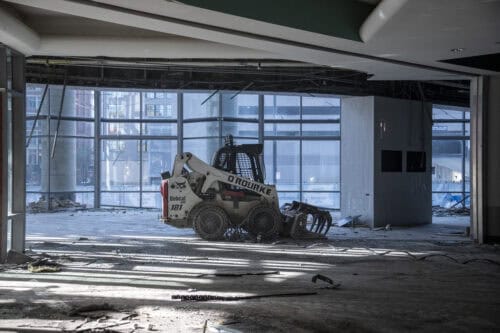
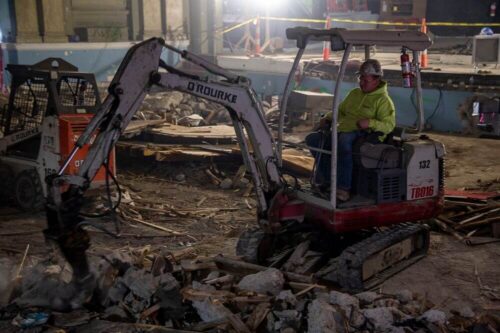
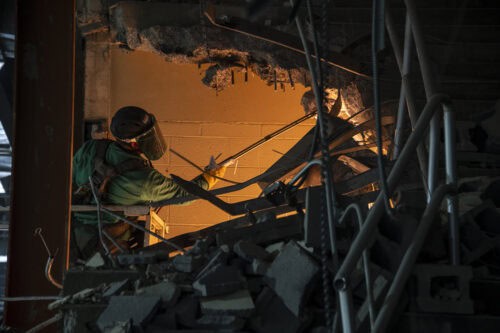

Why Hire O'ROURKE For Your Project?
For over 60 years, O’ROURKE has provided top-quality interior demolition services to our clients throughout the country. We are fully licensed, insured, and bonded. Our highly trained team of professionals has the expertise and experience to handle even the most challenging demolition projects.
O’ROURKE is committed to providing the highest level of customer service and satisfaction. We have the knowledge and expertise to safely and efficiently handle any interior demolition project, from small office space demolition to large industrial complexes.
Whether partially demolishing an old office or tearing down an entire office building, O’ROURKE is the company you can trust to get the job done right. We understand the importance of minimizing disruptions and maximizing safety, and our highly trained team has the experience and expertise to get the job done quickly and efficiently.
Interior Demolition Contractors For Commercial & Industrial Buildings
O’ROURKE specializes in commercial and industrial demolition projects, having completed thousands of jobs at sites across the country. Interior demolition is often the first step in these large renovation and restoration projects, with many types of businesses utilizing our services to prepare the property for new tenants or new usage:
- Commercial Buildings (retail, office space, etc.)
- Industrial Buildings (warehouses, manufacturing plants, etc.)
- Medical Facilities (hospitals, pharmaceutical plants, etc.)
- Academic Institutions (schools and universities)
- Residential (apartment buildings and condominiums)
Request A Quote
O’ROURKE specializes in precise interior demolition that gets your space renovation-ready. From commercial build-outs to clearing out large-scale facilities, we bring the tools, expertise, and precise control that your demolition project needs. We are headquartered in Cincinnati, Ohio, and as an industry leader, our team regularly travels throughout the country for projects.
O’ROURKE can help you make the most of your investment if you want to renovate or expand your space. Our team of experts will work with you to develop a plan that meets your specific needs and budget.

